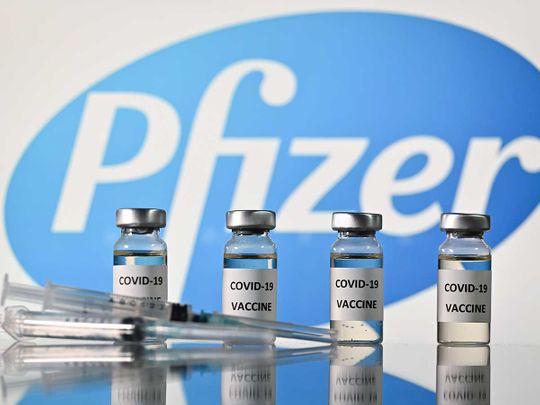Washington: Moderna Inc’s COVID-19 vaccine was authorised by US regulators on Friday, the second inoculation against the new coronavirus to get a regulatory green light in the United States and the first approval for Moderna’s shot worldwide.
The following is what we know about the race to deliver vaccines to help end the coronavirus pandemic that has killed 1.65 million people worldwide.
Who is furthest along?
US drugmaker Pfizer and German partner BioNTech are the COVID-19 vaccine trailblazers.
On November 18, they became the first in the world to release full late-stage trial data. Britain was the first to approve the shot for emergency use on December 3, followed by Canada on December 9 and the US Food and Drug Administration (FDA) on December 11.
Several other countries including Saudi Arabia and Mexico have also approved it.
The European Medicines Agency (EMA) is due to complete its review of the shot by December 21 and India is accelerating its review.
Who will approve Moderna next?
Moderna became a close second to Pfizer in many countries after it released a full data analysis for a late-stage trial on November 30 showing a 94.1 per cent efficacy rate for its vaccine. Canada is weighing approval now and the EMA will do so on January 6.
Who else is in the running?
Britain’s AstraZeneca is seeking approval for its vaccine in Britain after announcing interim late-stage trial data on November 23. It had an average efficacy rate of 70 per cent and as much as 90 per cent for a subgroup of trial participants who got a half dose first, followed by a full dose.
However, it is not clear how the regulator will deal with the different dosages in the efficacy data in its assessment.
While India is conducting an accelerated review, it has asked for more data. AstraZeneca is also in discussions with the EMA, which is conducting a rolling review of the vaccine.
US drugmaker Johnson & Johnson plans to deliver trial data in January 2021, teeing it up for US authorisation in February if its shot is effective. It reduced the enrolment target for its clinical trial to 40,000 volunteers from 60,000 on December 9, potentially speeding results which are tied to how quickly participants become infected.
US firm Novavax is running a late-stage trial in Britain with data due in the first quarter of 2021. It expects to start a large-scale trial in the United States this month.
France’s Sanofi and Britain’s GlaxoSmithKline , however, announced a setback on December 11 in their attempts to develop a vaccine. The drugmakers said it showed an insufficient immune response in older people in mid-stage trials and that they would start a new study in February.
What happens in the trials?
The companies typically test their vaccines against a placebo – typically saline solution – in healthy volunteers to see if the rate of COVID-19 infection among those who got the vaccine is significantly lower than in those who received the dummy shot.
How are volunteers infected?
The trials rely on subjects becoming naturally infected with COVID-19, so how long it takes to generate results largely depends on how pervasive the virus is where trials are being conducted. Each drugmaker has targeted a specific number of infections to trigger a first analysis of their data.
How well are vaccines supposed to work?
The World Health Organisation ideally wants to see at least 70 per cent efficacy. The FDA wants at least 50 per cent – which means there must be at least twice as many infections among volunteers who received a placebo as among those in the vaccine group. The EMA has said it may accept a lower efficacy level.
What about Russia and China?
While Pfizer’s shot was the first to be rolled out following the publication of full Phase III trial data, Russia and China have been inoculating their citizens for months with several different vaccines still undergoing late-stage trials.
Russia said on November 24 its Sputnik V vaccine, developed by the Gamaleya Institute, was 91.4 per cent effective based on interim late-stage trial results. It started vaccinations in August and has inoculated more than 100,000 people so far.
India plans to make 300 million of the shots next year.
China launched an emergency use programme in July aimed at essential workers and others at high risk of infection. It has vaccinated about one million people as of mid-November using at least three shots – two developed by the state-backed China National Biotec Group (CNBG) and one by Sinovac Biotech.
Sinovac said on November 18 that mid-stage trial results showed its CoronaVac shot triggered a quick immune response and interim data from its late stage trial could come this year.
Meanwhile, on December 9, the UAE officially registered a COVID-19 vaccine, nearly six months after it first kicked off late-stage vaccine trials, dubbed ‘4 Humanity’, in the country.
The announcement is a significant vote of confidence by the UAE authorities in the safety and efficacy of the vaccine that has been developed by Chinese experts.


